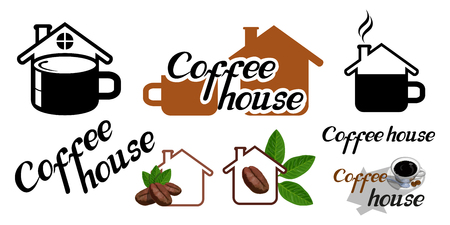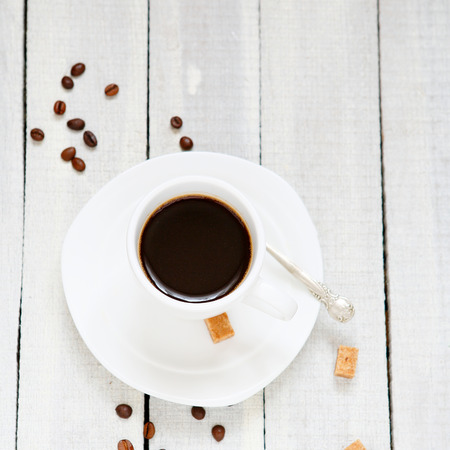Understanding Pour Over Brewing
Pour over brewing is a manual coffee-making method that gives you full control over the brewing process. Unlike automatic drip machines or French press, pour over involves slowly pouring hot water over freshly ground coffee in a filter, allowing the water to extract flavors as it flows through the grounds and drips into a carafe or mug below.
This method stands out for its ability to highlight the unique characteristics of different coffee beans. Its especially popular among coffee lovers who enjoy clean, bright flavors and want to explore the nuances of single-origin beans.
Heres a quick comparison of pour over versus other common brewing methods:
| Brewing Method | Flavor Profile | Control Over Brew | Clarity |
|---|---|---|---|
| Pour Over | Clean, bright, complex | High (grind size, water temp, pour rate) | Very clear |
| French Press | Bold, rich, full-bodied | Medium (steep time, grind size) | Less clear (more oils & sediments) |
| Automatic Drip | Mild, consistent | Low (machine settings only) | Moderate clarity |
| Espresso | Strong, concentrated, intense | High (pressure, grind size, timing) | Creamy with crema on top |
The type of coffee bean you choose plays a huge role in how your pour over will taste. Because this method emphasizes subtle flavors and aromas, choosing the right bean can make or break your cup. Whether youre into fruity Ethiopian coffees or nutty Colombian varieties, pour over lets those flavor notes shine through in a way that few other methods can match.
2. Choosing the Right Roast Level
When it comes to pour over brewing, the roast level of your coffee beans plays a big role in how your cup will taste. The three main roast levels—light, medium, and dark—each bring out different flavor notes, body, and acidity in the coffee. Knowing how each one affects your brew can help you pick the best beans for your taste.
Understanding Roast Levels
Heres a quick breakdown of the differences between light, medium, and dark roasts:
| Roast Level | Flavor Profile | Acidity | Body | Common Notes |
|---|---|---|---|---|
| Light Roast | Bright and vibrant | High | Light | Citrus, floral, fruity |
| Medium Roast | Balanced and smooth | Medium | Medium | Nuts, caramel, chocolate |
| Dark Roast | Bold and smoky | Low | Heavy | Bitter chocolate, roasted nuts, spice |
Why Light to Medium Roasts Work Best for Pour Over
The pour over method highlights the subtle flavors and aromas in coffee, making it ideal for light to medium roasts. These roast levels preserve more of the bean’s original characteristics because they’re roasted for a shorter time at lower temperatures compared to dark roasts. That means you’ll get more complexity and clarity in your cup.
Light Roasts: Great for Flavor Exploration
If you enjoy tasting the unique qualities of beans from different regions—like fruity Ethiopian or floral Kenyan coffees—light roasts are perfect. They keep the bright acidity and delicate notes that make these coffees special.
Medium Roasts: A Balanced Choice
If youre looking for a smoother, rounder flavor with a bit less acidity but still want to enjoy some origin characteristics, medium roasts offer a great balance. Theyre also a solid choice if you’re just getting into pour over brewing.
Avoiding Dark Roasts for Pour Over
While dark roasts are popular for espresso or drip coffee lovers who enjoy a bold, rich taste, they tend to mask the bean’s natural flavors. In pour over brewing, dark roasts can come off as too bitter or flat since the method doesn’t add much body like espresso does.
Selecting the right roast level is all about personal taste—but if you want to experience all the nuanced flavors that pour over brewing can bring out, starting with light to medium roasts is usually your best bet.

3. Single Origin vs. Blend
When choosing coffee beans for pour over brewing, one of the key decisions youll face is whether to go with single origin beans or a blend. Each option brings its own unique characteristics to your cup, and understanding the difference can help you tailor your coffee experience to your personal taste.
What Is Single Origin Coffee?
Single origin coffee comes from one specific location — it could be a single country, region, or even a particular farm. This means the beans share similar growing conditions, climate, and processing methods. As a result, single origin coffees often have distinct flavor notes that reflect their terroir (like wine).
Flavor Profile of Single Origin
These coffees are known for their clarity and unique flavors. You might taste bright citrus in Ethiopian beans or rich chocolate tones from Colombian varieties. Theyre ideal if you enjoy exploring how geography influences flavor.
What Are Blends?
Blends are made by combining beans from multiple origins. Roasters carefully mix different beans to create a balanced and consistent flavor profile. The goal is to highlight the strengths of each origin while minimizing any extremes.
Flavor Profile of Blends
Blends are usually smoother and more well-rounded than single origin coffees. They’re great for drinkers who prefer a dependable flavor experience every morning or want something that pairs well with milk or cream.
Which One Is Better for Pour Over?
The answer depends on what you’re looking for:
| Type | Flavor Complexity | Consistency | Best For |
|---|---|---|---|
| Single Origin | High – unique notes based on origin | Can vary by season and harvest | Coffee enthusiasts exploring new flavors |
| Blend | Moderate – balanced and smooth | Very consistent across batches | Daily drinkers who want reliability |
Pro Tip:
If youre just getting into pour over brewing, try both! Start with a blend to dial in your technique, then move on to single origins to explore more complex flavors as your palate develops.
4. Grinding for Pour Over
When it comes to pour over coffee, the grind size plays a major role in how your cup turns out. Even if you’ve chosen the perfect beans, the wrong grind can throw everything off. That’s because pour over brewing is all about control — you’re in charge of how fast the water flows through the coffee, which affects how much flavor gets extracted.
Why Grind Size Matters
For pour over, a medium to medium-fine grind is typically ideal. If the grind is too coarse, the water will pass through too quickly, resulting in under-extracted coffee that tastes sour or weak. On the other hand, if it’s too fine, the brew will take too long and you’ll end up with bitter, over-extracted flavors.
Common Grind Sizes and Their Effects
| Grind Size | Texture | Brew Result |
|---|---|---|
| Coarse | Sea salt | Weak, sour taste (under-extracted) |
| Medium | Sand-like | Balanced flavor (ideal for pour over) |
| Fine | Sugar-like | Bitter taste (over-extracted) |
The Power of Freshly Ground Coffee
If you want your pour over to really shine, grind your beans just before brewing. As soon as coffee is ground, it starts losing its aroma and flavor due to oxidation. Freshly ground coffee preserves those rich oils and fragrant notes that make each cup special.
Pro Tip:
Investing in a good burr grinder gives you more control over consistency and helps bring out the best in your beans. Blade grinders tend to create uneven particles, which can lead to inconsistent extraction.
Choosing the right grind size and grinding fresh are simple steps that can dramatically improve your pour over experience. It’s all about letting your coffee beans show off their full potential!
5. Freshness and Storage Tips
When it comes to pour over coffee, freshness is key. Fresh beans can make all the difference in flavor, aroma, and overall quality of your cup. Let’s break down how to buy fresh coffee beans and store them the right way to keep them tasting great.
How to Buy Fresh Coffee Beans
The best way to ensure youre getting fresh beans is to check the roast date—not the expiration date—on the packaging. Look for coffee that was roasted within the past two to four weeks. Most specialty roasters include this information right on the bag.
What to Look for on a Coffee Bag
| Label | What It Means | Why It Matters |
|---|---|---|
| Roast Date | Date the beans were roasted | The fresher, the better for pour over flavor |
| Whole Bean | Coffee in its whole form, not ground | Stays fresher longer than pre-ground coffee |
| Origin & Roast Level | Where its from and how dark its roasted | Helps match flavor profile with your taste preference |
Best Practices for Storing Coffee Beans
Once you’ve got your hands on some fresh beans, storing them properly is crucial to preserving their flavor. Here are some simple tips:
- Use an airtight container: Oxygen is one of coffee’s biggest enemies. Store your beans in a container with a tight seal to reduce exposure to air.
- Avoid sunlight: Keep your container in a dark place like a pantry or cupboard. Light can speed up the staling process.
- Keep it cool but not cold: Room temperature is ideal. Avoid storing coffee in the fridge or freezer, as moisture can damage the beans.
- No clear containers: If possible, use opaque containers to keep light out.
Recommended Storage Options
| Storage Method | Pros | Cons |
|---|---|---|
| Airtight Canister with CO₂ Valve | Keeps air out while allowing gas release; preserves freshness well | More expensive than basic containers |
| Mason Jar (Opaque) | Affordable and airtight if sealed properly | No valve for gas release; needs dark storage space |
| Original Bag with Resealable Closure | Convenient if it has a good seal and one-way valve | Often less airtight after multiple uses |
If you want consistently delicious pour over coffee, pay attention to both freshness and storage. Starting with recently roasted whole beans and storing them correctly will help you get the most out of every brew.


